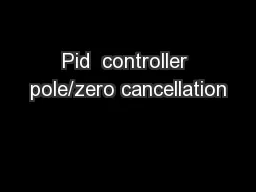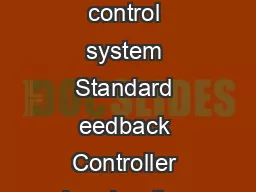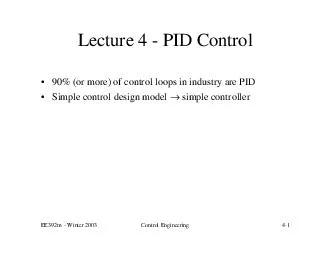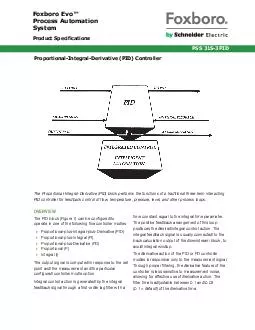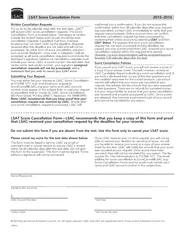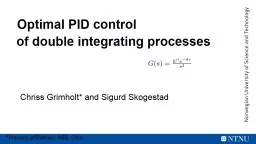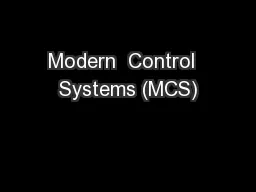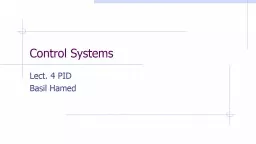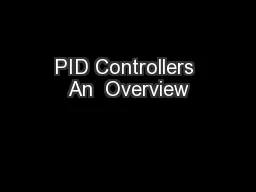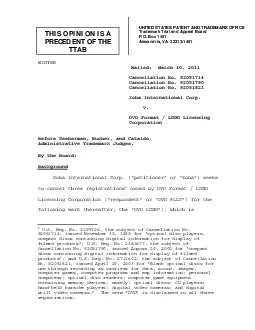PPT-Pid controller pole/zero cancellation
Author : olivia-moreira | Published Date : 2018-10-30
By Frank Owen PhD PE polyXengineering Inc San Luis Obispo California This is just one strategy for tuning a pid There are many strategies to follow to tune a PID
Presentation Embed Code
Download Presentation
Download Presentation The PPT/PDF document "Pid controller pole/zero cancellation" is the property of its rightful owner. Permission is granted to download and print the materials on this website for personal, non-commercial use only, and to display it on your personal computer provided you do not modify the materials and that you retain all copyright notices contained in the materials. By downloading content from our website, you accept the terms of this agreement.
Pid controller pole/zero cancellation: Transcript
Download Rules Of Document
"Pid controller pole/zero cancellation"The content belongs to its owner. You may download and print it for personal use, without modification, and keep all copyright notices. By downloading, you agree to these terms.
Related Documents

